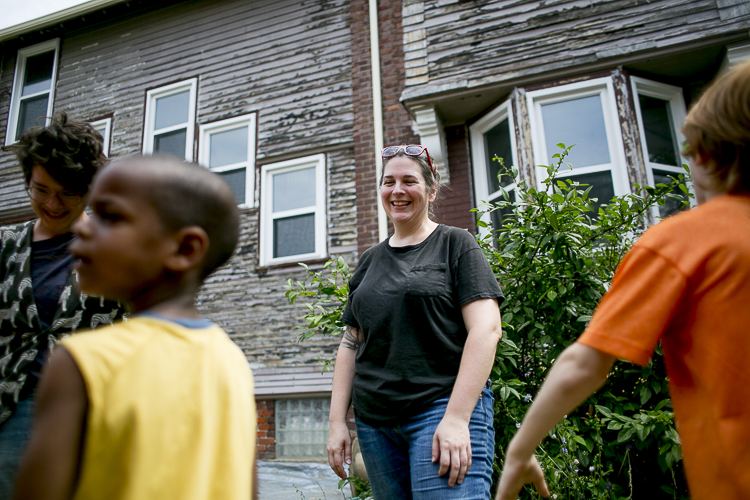A 19th Century Russian fable by Ivan Krylov called “The Inquisitive Man” is credited as being the origin of the phrase, “the elephant in the room.” In the story, a visitor to a museum recounts to his friend all the tiny wonders he saw there — dragonflies, beetles, and gnats — without noticing the elephant.
In a small Detroit bungalow on Carpenter Street there is an elephant in the room. Two elephants, to be precise. Fully grown, but not fully formed, life-size paper-mache reproductions of Asian elephants who will soon have the ability to walk, sway, and swing their trunks around.
The artists and performers at Carrie Morris Arts Production, or CMAP, are creating these behemoths from scratch, using wood and paper, old nylons and glue. These life-size puppets will be walking on stage for four performances at the New Center Park amphitheater July 27 to 29.
Since 2012, Carrie Morris, director and founder of CMAP, has brought her vision and passion for theatre and puppetry to the Detroit/Hamtramck neighborhood known as Bangaltown, where the CMAP house on Carpenter exists as a venue, studio, park, and community space.

Performing a local story a few miles from the main studio and venue is intrinsic to the mission and history of CMAP. Deeply rooted in its neighborhood, the theatre continues to tackle local stories and visions, whether it’s dramatizing interviews from Detroit firefighters using an ancient Japanese puppetry style called Bunraku or collaborating live with neighbors the Bangla School of Music for a performance that took place in the window of their venue.
Morris, who has a lengthy history in puppetry and theater, describes CMAP as a “super local” troupe and venue that uses international puppet traditions.
After studying theater in both undergraduate and graduate school, she studied puppetry in Indonesia as a Fulbright grantee for a year, becoming immersed in the cultural significance and rich history of the art form of shadow puppetry known as Wayang. Morris borrows inspiration from many different puppet traditions, and utilizing forms from Japan, Indonesia, and the West for past shows.
The connecting thread is the telling of a story. “I really liked the idea of telling stories. And as audience members we put our emotions on these inanimate objects … and believe that they live and have feelings,” Morris says.
In traditional theater, a script is created or studied, actors may wear costumes or makeup or inhabit a stage with props and backgrounds. In puppetry, a whole different set of logistics are demanded. The puppeteers have to inhabit the puppets as well as use voice, narration, and the stage itself.
But it’s also a huge engineering challenge, one that’s magnified when working with life-sized elephants, the largest scale puppets CMAP has created. The performance, an all ages show sponsored by the Kresge Foundation and Midtown Detroit, is titled “Wanda and Winky Go To California.” It’s adapted from a children’s book by Michigan author Linda McLean and based on the true story of the last two elephants of the Detroit Zoo.
Puppeteer, musician, and performer Lindsay McCaw is patiently forming the elephant’s head, stuffing nylons into the creature’s nascent skull.
Story by Glen Morren
Photos by Anthony Lanzilote
Read the original story: Model D
